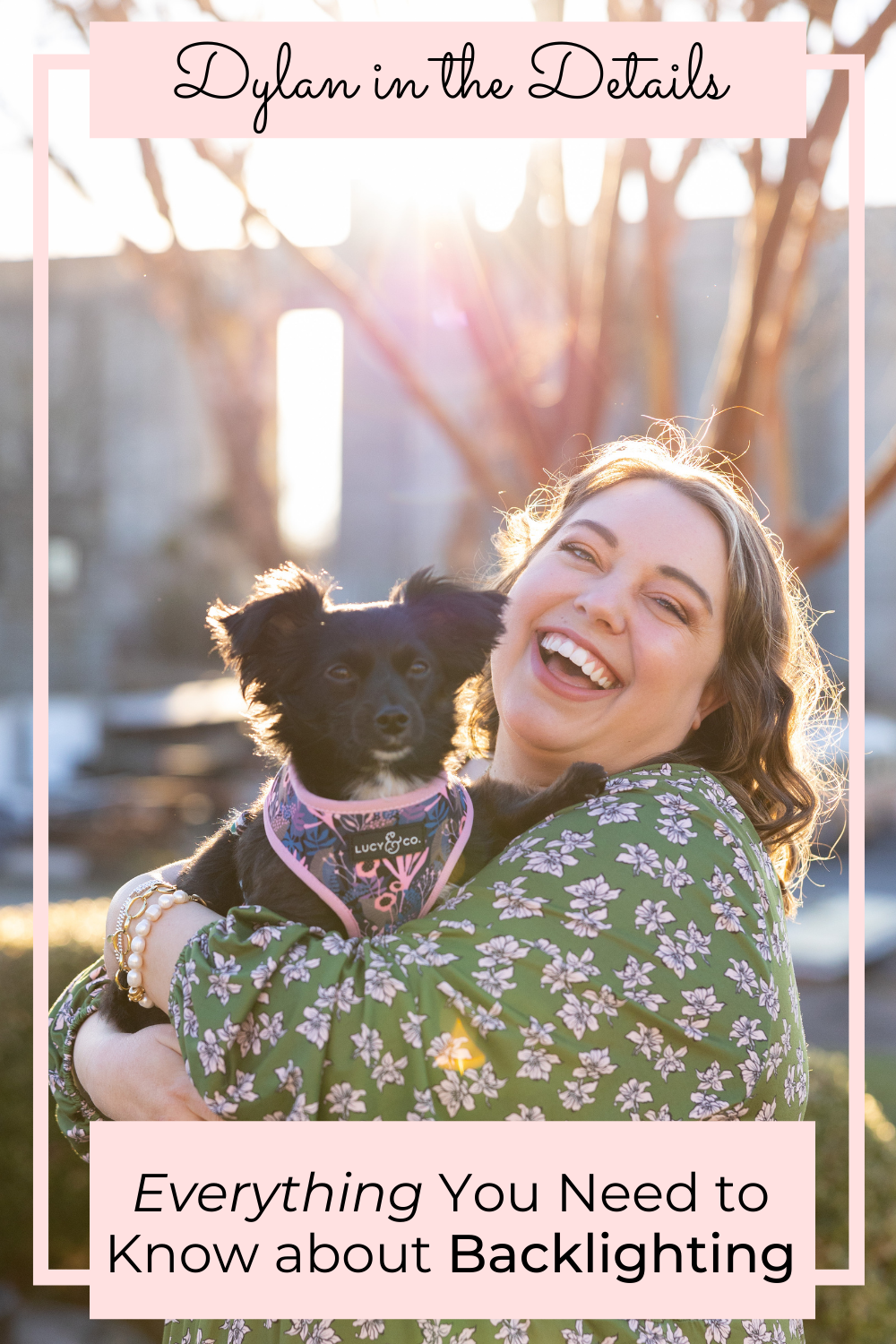
The Blog
Everything You Need to Know about Backlighting
April 13, 2022
Table of Contents
Share on Social Media!
If you’re starting to feel confident with some of the lighting principles we’ve already discussed, you might be wondering what you can do to start building on that knowledge. Backlighting is a bonus skill that you can start to cultivate that take your photography up a notch. It absolutely isn’t necessary and isn’t something you’ll use at every session, but it is a great trick to feel comfortable deploying when the situation presents itself.
Everything You Need to Know about Backlighting – Definition
What is backlighting? Backlighting is when a bright light illuminates the subject from the back. (Hence the ‘back’ part of backlighting.) See the almost outline of light around Ange’s hair below? That’s backlighting. The next time you watch TV or a movie, see if you can notice instances where the actors are backlit. It happens all the time. Why? Because it is an aesthetically pleasing (and easy) way to draw the eye to the subject.

Everything You Need to Know about Backlighting – How to Do It
Before we get into the details of backlighting, I just want to quickly review our lighting concepts.
- First we are always looking for open shade. Open shade is the shadow something else casts where you subject can stand, but also still see the sky. (If you want a full refresher on open shade, the blog post is here!)
- Once the subject is in open shade, we want to consider what the light looks like in the background. Preferably we want open shade in the background as well. (Full blog post on light on your subject vs. light in the background.)
- Once we feel confident with these two things, then we can start to play around!
If we want our subject in open shade, but we need bright light for backlighting, then we need to strategically place our subject so we get the best of both worlds. Where might that be? Where the bright light meets the shadows. (Which, honestly, sounds the first riddle in a fantasy quest..) You subject will need to stand on the side with open shade, but have their back facing the bright light.
There isn’t an exact formula I can give you for this. It will probably take a few steps of adjustment, either your subject or the photographer. (Or both!) You are looking to have the subject and the background with the same lighting and only have the bright light around their outline.
Everything You Need to Know about Backlighting – Golden Hour
Backlighting can be easier, depending on what time of day you shoot. Backlighting at golden hour is not only simpler, but it also gives you a glowy look. (See full blog post about timing/golden hour here.) Light isn’t as harsh during golden hour in general, so you’ll have an easier time finding consistent light on both your subject and in the background. You’ll also have an easier time finding light because it is diffusing out.
Another bonus of shooting during golden hour is that the ring of light around the subject is gold or orange, as opposed to a white or blue color during the day when the light is harsh. You can see an example of that if you compare the photo of Ange above to the photo of Olivia below.

Everything You Need to Know about Backlighting – Troubleshooting
Background Light
Will the lighting situation on the subject and the background always be perfect? No. I’m presenting the optimum situation so you know what to shoot for, but don’t hold yourself to an unreasonable standard. Sometimes it won’t happen. Look at the photo of Z below. You can that, behind her on the grass, the lighting is a bit spotty. It isn’t the absolute perfect open shade that I might want, but it is still good lighting. Don’t sacrifice good (or even great) because it isn’t perfect.

Hazy Photos
Sometimes backlighting can get into borderline (or all out) sun flare. Even with the somewhat diffused light of golden hour, the sun pointing into the lens can still sometimes cause it. (More on sun flare here.) Getting rid of the haze in photos is usually as simple as moving a few steps. Usually I start by moving myself (the photographer) before I start moving the subject. Sometimes you can move and have something else block the light. Whether that be a tree or building or something. Sometimes the subject can even block the sun, depending on where they are standing. Something else to keep in mind is that sometimes the lens just needs to be at a different angle, so you may just need to move the camera slightly.

Everything You Need to Know about Backlighting – Troubleshooting
I feel like I’ve said this a million times, but backlighting is something that takes time to perfect. It can still get tricky, even for those of us who do it frequently. But as you start to try it, you’ll start to get the hang of it. You can only get better by doing it, and, honestly, by messing it up. Remember that none of us post our failure photos on Instagram.
